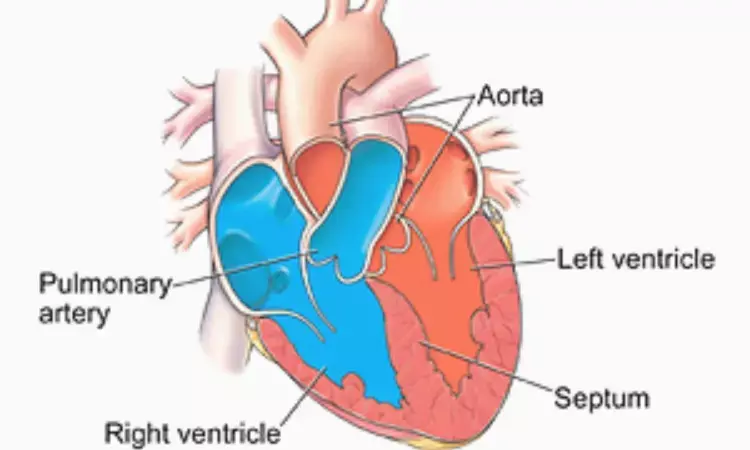- Home
- Medical news & Guidelines
- Anesthesiology
- Cardiology and CTVS
- Critical Care
- Dentistry
- Dermatology
- Diabetes and Endocrinology
- ENT
- Gastroenterology
- Medicine
- Nephrology
- Neurology
- Obstretics-Gynaecology
- Oncology
- Ophthalmology
- Orthopaedics
- Pediatrics-Neonatology
- Psychiatry
- Pulmonology
- Radiology
- Surgery
- Urology
- Laboratory Medicine
- Diet
- Nursing
- Paramedical
- Physiotherapy
- Health news
- Fact Check
- Bone Health Fact Check
- Brain Health Fact Check
- Cancer Related Fact Check
- Child Care Fact Check
- Dental and oral health fact check
- Diabetes and metabolic health fact check
- Diet and Nutrition Fact Check
- Eye and ENT Care Fact Check
- Fitness fact check
- Gut health fact check
- Heart health fact check
- Kidney health fact check
- Medical education fact check
- Men's health fact check
- Respiratory fact check
- Skin and hair care fact check
- Vaccine and Immunization fact check
- Women's health fact check
- AYUSH
- State News
- Andaman and Nicobar Islands
- Andhra Pradesh
- Arunachal Pradesh
- Assam
- Bihar
- Chandigarh
- Chattisgarh
- Dadra and Nagar Haveli
- Daman and Diu
- Delhi
- Goa
- Gujarat
- Haryana
- Himachal Pradesh
- Jammu & Kashmir
- Jharkhand
- Karnataka
- Kerala
- Ladakh
- Lakshadweep
- Madhya Pradesh
- Maharashtra
- Manipur
- Meghalaya
- Mizoram
- Nagaland
- Odisha
- Puducherry
- Punjab
- Rajasthan
- Sikkim
- Tamil Nadu
- Telangana
- Tripura
- Uttar Pradesh
- Uttrakhand
- West Bengal
- Medical Education
- Industry
Patients with repaired tetralogy of Fallot may have good long-term outcomes, predict Cardiac MRI markers

Boston, MA: A recent study has revealed that adults with repaired tetralogy of Fallot (rTOF) and a no more than mild right ventricular (RV) dysfunction combined with no significant RV hypertrophy are likely to be free from serious adverse clinical events into their sixth decade of life. Further they may require less frequent cardiac testing.
"Normal or mildly decreased RV systolic function and lack of significant RV hypertrophy were associated with aborted sudden death, freedom from death, sustained and non-sustained ventricular tachycardia, atrial tachyarrhythmias, and NYHA class >II at age 50 years, Amara Majeed, Department of Pediatrics, Harvard Medical School, Boston, MA, and the team wrote in their study.
In patients with rTOF, risk stratification has focused on poor clinical outcomes while there has been no characterization of the predictors of a benign clinical course. Considering this, Dr. Majeed and colleagues aimed to identify cardiac magnetic resonance (CMR) markers of a good clinical course late after TOF repair in the study published in the American Heart Journal.
For this purpose, the researchers analyzed clinical and CMR data from the International Multicenter TOF Registry (INDICATOR). Time to the earliest occurrence of a composite of death aborted sudden death and sustained ventricular tachycardia was the primary outcome. The secondary outcome was time to the earliest occurrence of atrial arrhythmia, nonsustained VT, and NYHA class >II.
The researchers then identified predictors of the 3-category outcome: (a) good outcome -- defined as freedom from the primary AND secondary outcomes at age 50 years; (b) poor outcome -- defined as the presence of the primary outcome before age 50 years; and (c) intermediate outcome -- defined as not fulfilling criteria for good or poor outcomes.
Following were the study's key findings:
- Among 1088 eligible patients, 96 had good outcomes, 60 experienced poor outcomes, and 932 had an intermediate outcome.
- By univariate analysis, smaller right ventricular (RV) end-systolic and end-diastolic volume index, smaller left ventricular end-systolic volume index, higher right and left ventricular ejection fraction, lower right and left ventricular mass index, and lower left ventricular mass/volume ratio was associated with a good outcome.
- Higher RV ejection fraction (OR 2.38 per 10% increase) and lower RV mass index (OR 1.72, per 10 g/m2 decrease) were identified as independently associated with good outcomes after adjusting for age at CMR.
- Classification and regression tree analysis identified important thresholds associated with a good outcome that were specific to patients age ≥37 years at the time of CMR; these were RV ejection fraction ≥42% and RV mass index <39 g/m2.
The study had several limitations: the cohort was restricted to patients who have undergone CMR. So, patients with pacemakers or defibrillators implanted before CMR were excluded. Additionally, the researchers did not explore other covariates such as comorbid conditions, type of original surgery, and lifestyle patterns. Also, the CMR timings could have been influenced by clinical course and impacted by era.
"In this study of patients with rTOF, a favorable RV profile characterized by no more than mild dysfunction and absence of significant hypertrophy at age 37 years and older were identified as independent predictors of good clinical outcome into the 6th decade of life," the authors wrote. "In this study, the identified thresholds of RV EF and RV mass can refine risk stratification and resource utilization in adults with rTOF."
Reference:
The study titled, "Cardiac MRI predictors of good long-term outcomes in patients with repaired TOF," was published in the American Heart Journal.
Dr Kamal Kant Kohli-MBBS, DTCD- a chest specialist with more than 30 years of practice and a flair for writing clinical articles, Dr Kamal Kant Kohli joined Medical Dialogues as a Chief Editor of Medical News. Besides writing articles, as an editor, he proofreads and verifies all the medical content published on Medical Dialogues including those coming from journals, studies,medical conferences,guidelines etc. Email: drkohli@medicaldialogues.in. Contact no. 011-43720751


